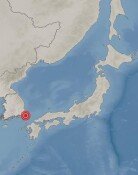Daedeok and Dresden
During her state visit to Germany last month, President Park Geun-hye held a Korea-Germany industry-academic cooperation strategy symposium in the Fraunhofer Institute for Ceramic Technologies and Systems IKTS, after receiving an honorary doctorate at the University of Technology Dresden. As a representative of the Korea Venture Business Association, I also attended the symposium and learned various know-hows that enabled Dresdens success.
Daedeok Science Town in Korea is similar to Dresden. While Dresden has served as a science and business city for industry-academic cooperation for the last 24 years after the reunification of Germany, Daedeok has played a key role in Koreas research and development over the past four decades.
Daedeok Science Town marked the 40th anniversary of its founding last year. I believe Dresden can be a role model for Daedeok. This small town in East Germany with the population of 510,000, has achieved annual growth of 14 percent since 2000. In the symposium, Dirk Hilbert, a deputy mayor for economic affairs in Dresden, said the city went through three steps to achieve such a rapid growth.
The first step was to actively respond to the privatization of state-owned corporations and encourage citizens to have confidence. The second step was to aggressively host R&D centers like the Fraunhofer and invest in new businesses. The third step was to build a city for science and business by turning the University of Technology Dresden into a top university and implementing policies and strategies to form an innovation cluster and pursue globalization, which could be a basis for small but competent businesses.
In Daedeok, government-funded institutes, universities, businesses and the local government are intertwined, but not in harmony. A number of patent applications made by over 30 government-funded institutes every year are often neglected by businesses because they do not meet their demands. This is a point that both the academia and the industry should reflect on.
The industry-academic cooperation system, a key to the German version of Creative Economy, carries significant implications for the role of Koreas Creative Economy Innovation Center in Daejeon and development strategies for underdeveloped North Korea after reunification. In the symposium, President Park showed keen interest in the zero-energy building based on photovoltaic and thermal energy, jointly developed by the Fraunhofer Institute and a Korean company, and the technology related to IoT (Internet of Things), an area that will dominate the future world.
The Creative Economy Innovation Center, which used the success of Dresden, a European version of Silicon Valley, as a benchmark, has recently launched in Daejeon. I look forward that this center breaks down barriers between the industry and the academia and lays the foundation for a true science and business city.







